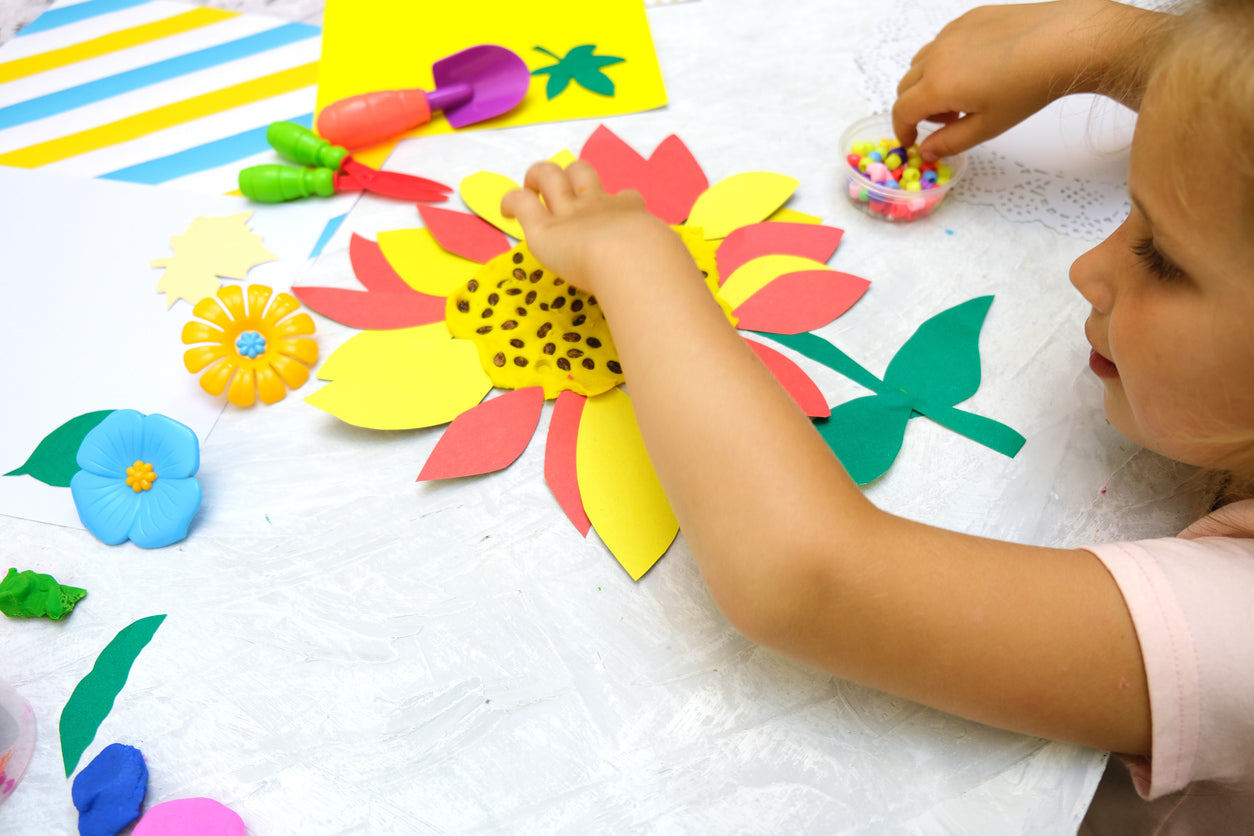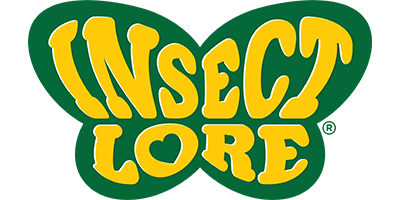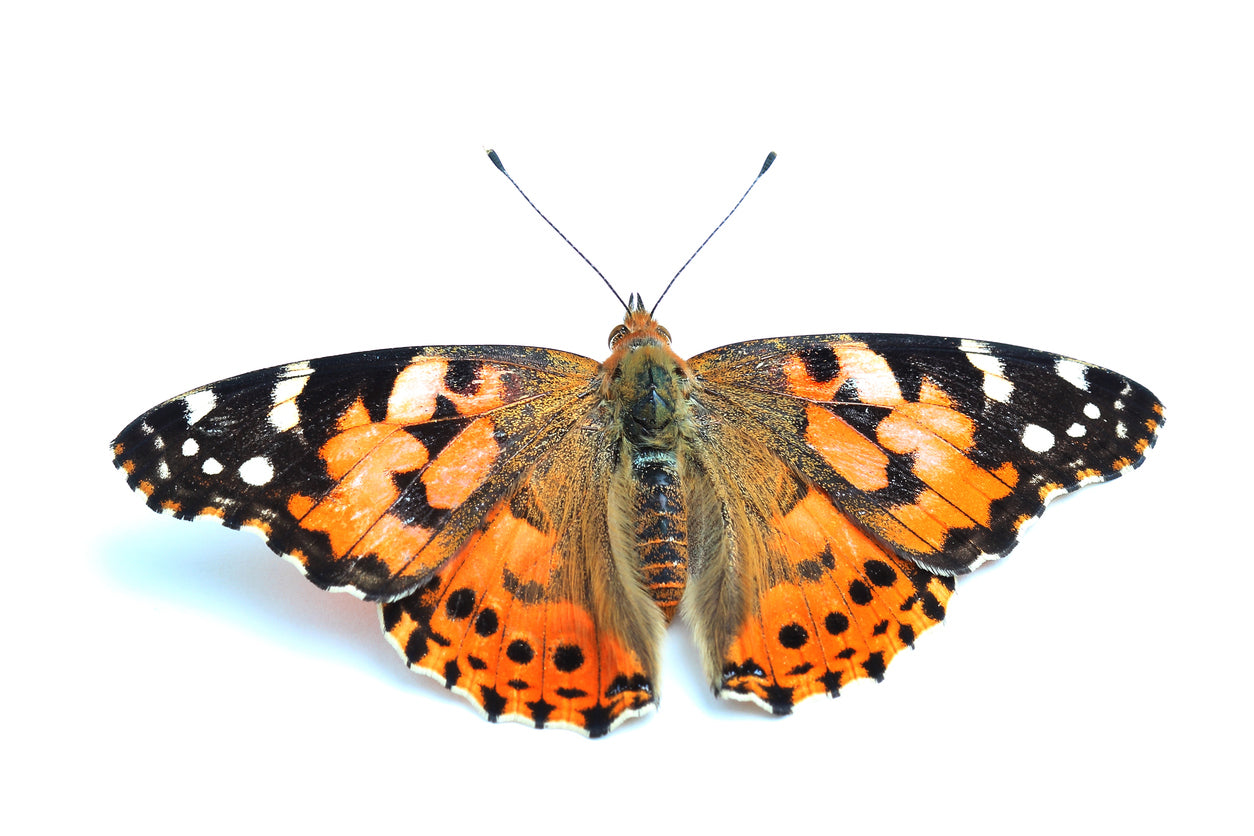Add description, images, menus and links to your mega menu
A column with no settings can be used as a spacer
Link to your collections, sales and even external links
Add up to five columns
Add description, images, menus and links to your mega menu
A column with no settings can be used as a spacer
Link to your collections, sales and even external links
Add up to five columns

Children's Pollinator Activities for Summer STEM Fun
By Spencer McManamna June 10, 2025 6 min read
Looking for pollinators? You won't have to go far, as some of them can be in your very own yard! Your backyard garden attracts a wide variety of pollinators, each one of them playing an important role in supporting and providing a foundation for plant life - whether they are buzzing bees, fluttering butterflies, lucky ladybugs or even midnight moths. The best part is, these are all unique insects that are simple to identify and observe, no scientific degree required!
Types of Pollinator Insects
Bees are among the most well-known pollinators and come in many types; beyond the famous honeybees there are bumblebees and solitary bees like mason bees.
Butterflies and moths, with their colorful wings and fluttering but focused flight, also help pollinate flowers while searching for nectar.
Ladybugs, while not primary pollinators, contribute to garden health by controlling the spread of aphids and other pests, supporting a thriving environment for pollination.
Identifying Pollinators by Appearance
Parents can help children recognize common pollinators by focusing on simple traits and behavior rather than complex identification. Everyone knows the recognizable fuzzy yellow body of a bee that can be seen buzzing from flower to flower, while butterflies rest with their colorful wings open and are active during the day.
Moths usually appear at dusk or night and often have duller and/or more pale coloring compared to our butterfly friends.
Ladybugs are, of course, small, round, and red with black spots. Using garden observation charts or books with pictures can make the process fun and educational without needing an entomology degree!
Read on to discover the perfect STEM summer activities for you and your children to enjoy!
Making Complex Concepts Simple
Abstract concepts such as pollination or plant reproduction can be complex to explain to young learners such as preschool and early elementary children. That's why it's effective to use familiar analogies and simple, relatable language! For example, you can describe pollination as a “flower playdate” or even "plant party" where bees help move pollen.
Another example would be to compare pollen to a "magic dust" that helps flowers make seeds. By doing this you can makes the concept more fun and understandable for their growing minds. Storytelling can also bring these ideas to life—telling a tale about a busy bee named Beelinda who visits flowers to collect nectar and helps them grow new flowers will engage children's imaginations while teaching them science.
Hands-On Demonstrations
Hands-on demonstrations will aid their understanding by turning abstract ideas into physical, tactile experiences. Children can act out pollination by using a cotton ball (representing a fuzzy bee) to transfer colored powder (pollen) between paper flower models. Planting seeds and watching them grow over time gives kids a concrete sense of plant life cycles. These playful, interactive methods connect young learners to nature in a meaningful way, sparking curiosity and building a foundation for deeper scientific thinking later on.
Pollinator Activities for Summer Fun
We have a kaleidoscope of fun summer STEM activities for you to share with your children and students! Each of the following activities are designed for home use with readily available materials and can be adapted for a wide variety of different ages and attention spans.
1. "Bee Dress-Up" Pollination Drama
Be the bee! Here's a fun 15-20 minute physical activity where children can dress as bees and act out how pollen sticks to fuzzy bodies. Make sure to do this outdoors!
Materials List:
-
Yellow and black striped shirt or yellow shirt with black marker stripes
-
Fuzzy socks (chenille or wool work best)
-
Cotton balls, tape or velcro dots
-
Flour/colored chalk dust
-
Large paper flowers or real flowers in yard
Instructions:
-
Have child put on their bee costume
-
Tape cotton balls to fuzzy socks to increase texture
-
Press "bee hands" into flour/dust
-
Demonstrate how powder sticks to fuzzy parts
-
"Fly" to different flowers and showing powder transfer
-
Discussing what happens in real pollination
2. Flower Cafeteria Setup
20-30 minute pretend play activity using colored paper plates as different "restaurants" for various pollinators.
Materials List:
-
4-5 different colored paper plates
-
Various small snacks (crackers, fruit pieces, cereal)
-
sugar water in bottle caps
-
toy insects or animal figurines
-
laminated pictures of real pollinators
-
napkins for cleanup!
Instructions:
-
Designate each colored plate as specific "plant restaurant" type (red plate for hummingbird nectar, yellow for bee pollen, purple for butterfly nectar)
-
Explain that each "restaurant" serves different customers
-
Set up appropriate "food" on each plate
-
Give children toy pollinators or have them role-play as different insects
-
Guide them through visiting appropriate restaurants
-
Discuss why certain pollinators prefer certain flowers
3. "Pollen Detectives" Investigation
This 25-30 minute observation activity involves using magnifying glasses to examine real pollen and flower parts! It's time to Be the Botanist!
Materials List:
-
Child-safe magnifying glasses (at least 3x magnification)
-
White paper or paper plates
-
colored pencils or crayons
-
simple data collection sheet with pictures
-
basket for flower collection
-
wet wipes for cleanup
-
camera for documentation
Instructions:
-
Select appropriate flowers (lilies, sunflowers, zinnias work well)
-
Demonstrate safe flower handling
-
Gently touch flower centers to paper to collect pollen samples
-
Use magnifying glasses to observe pollen grains
-
Compare pollen from different flower types
-
Draw observations with colors and shapes
-
Look for pollen on visiting insects
-
Create simple comparison charts
-
Discuss findings using age-appropriate vocabulary
4. Build a Butterfly Landing Pad!
This 20-25 minute activity will help you and your little learners build a butterfly attraction station that provides ongoing observation opportunities over several weeks of study and fun!
Materials List:
-
shallow dish or pie pan (ceramic or plastic)
-
clean natural sponges
-
small smooth rocks or pebbles
-
sugar (white granulated)
-
measuring spoons
-
watering can or spray bottle
-
bright flowers (marigolds, zinnias, or cosmos work well)
-
simple observation chart with picture symbols
-
colored pencils
-
outdoor thermometer
Instructions:
-
Select optimal location (sunny area protected from strong winds)
-
Fill dish with clean water
-
Arranging sponges and rocks to create landing platforms
-
Mix sugar water solution (1 part sugar to 10 parts water)
-
Soak sponges with sugar water
-
Place fresh flowers around the station
-
Create a comfortable observation spot nearby
- Set up a simple system to collect the data
- Discuss findings using age-appropriate vocabulary
5. Pollinator Life Cycle Wheels
This 30-40 minute activity involves creating rotating educational wheels that show butterfly or bee development stages!
Materials List:
-
2 paper plates per child
-
brad fasteners
-
scissors (adult use)
-
crayons or colored pencils
-
ruler
-
pencil for marking
-
optional laminating materials for durability
-
hole punch
-
example pictures of life cycle stages for reference
Instructions:
-
Cut a window opening in the top plate (2-3 inches wide)
-
Divide the bottom plate into 4 equal sections using a ruler and pencil
-
Draw life cycle stages in correct order on the bottom plate:
-
Butterfly option: egg, caterpillar, chrysalis, adult butterfly
-
Bee option: egg, larva, pupa, adult bee
-
Color each life cycle stage with crayons or colored pencils
-
Assemble the plates by inserting brad fastener through both centers
-
Test wheel rotation to ensure the proper alignment of images with the window
-
Decorate the outer rim with related images (flowers, leaves, or garden scenes)
Practical Tips for Parents
You may run into some snags while doing these activities, whether it is poor weather conditions or a lack of visible pollinators. You can use these opportunities to teach your children about the unpredictability of nature and the fleeting, fragile essence of our ecosystem. Focus on visual examples and give them ample opportunities to ask questions and get a more hands-on approach to their activities. Collecting data doesn't have to be boring - it can be something creative like drawing a picture of what they see!
Extending Learning Year-Round
Even in winter, children can stay connected to pollinators and nature through creative indoor activities and seasonal observations. Research local nature centers or museum programs to stay engaged with the natural world even when pollinators aren’t buzzing or fluttering around. Sites such as pollinator.org offer a host of helpful resources to connect with the world of pollinators on a community level. If you spot any friendly bugs that have huddled indoors to stay warm out of the winter chill (such as ladybugs) instead of shooing them away, use it as an opportunity to learn more about insect hibernation!
Pollinator Activity Resources from Insect Lore
We've got the perfect tools, toys and accessories for your summer STEM fun! Our various Life Cycle Figurines give children a hands-on, tactile and durable toys to better understand the lives and biology of butterflies, ladybugs, ants and more! Visit the Insect Lore Library for Activity Journals with science, math and writing activities that make the perfect companion for any metamorphosis project!
Finally, our one-of-a-kind Butterfly Growing Kits give families and classrooms alike the incredible experience of seeing the butterfly life cycle! With these resources you can take your STEM adventures beyond summer and transform your school year!
Related products
Also in Butterflies

Enter Your Voucher Code Below
If you are experiencing difficulty redeeming your voucher on your desktop, please use a mobile device for a better redeeming experience.

We are unable to combine redemption fees. If you are redeeming 1-5 voucher codes, please complete separate purchases through our website for each voucher. If you are redeeming 6+ vouchers, please email us at customerservice@insectlore.com with your voucher codes and shipping address and we'll send you a custom invoice for payment.
Thank you for Redeeming your voucher!
You redeemed a $title

Don't miss this special one Time Offer.
Check the Box to Add this Special Offer to your Cart

Don't miss this special one Time Offer.
Check the Box to Add this Special Offer to your Cart
It looks like you are an Insect Lore UK/EU customer! You are visiting the Insect Lore USA website.
Click Insect Lore UK/EU website to be redirected to insectlore.co.uk.







